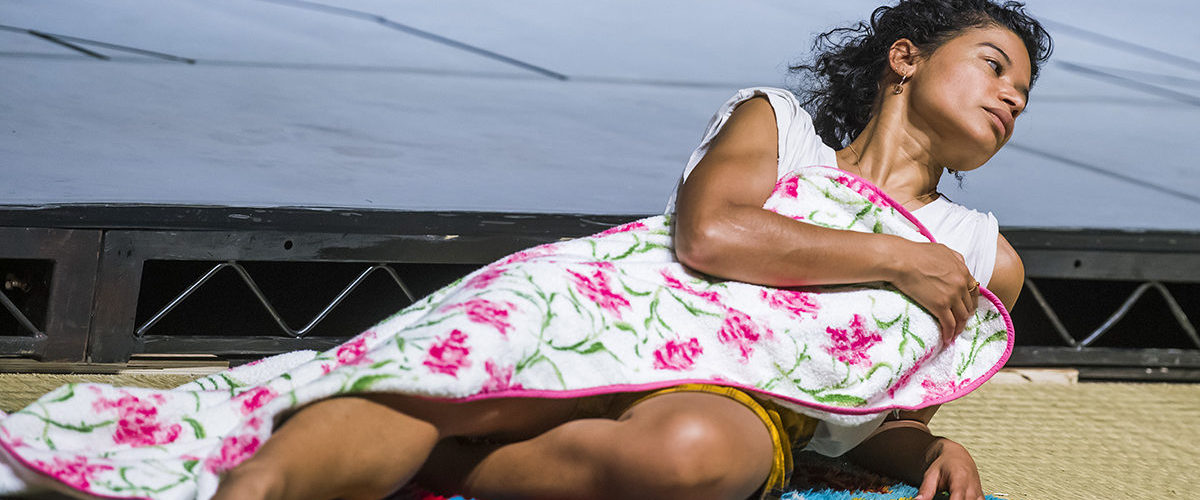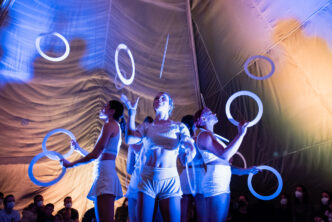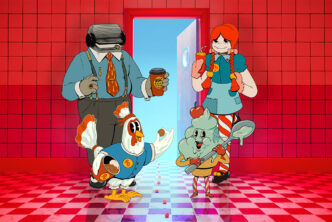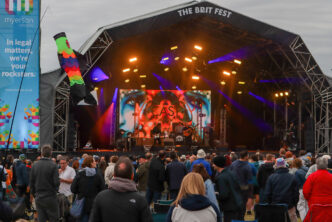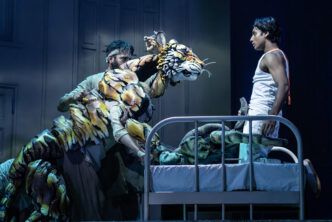You can approach Trajal Harrell’s new work, Maggie the Cat, as a purposeful critique of the politics of race, gender and class, inspired by (note: ‘inspired by’ not ‘based upon’) Tennessee Williams’s classic, Cat on a Hot Tin Roof; or you can go in and just lap it up as a riotous, unapologetic, unrelentingly energetic and playful gender-blending of dance, vocalisation and improvised DIY couture. (You might even, if you’re a suspicious old fuddy-duddy, suspect you are being an der Nase herumgeführt werden, as the Germans like to say). Pay your money, take your choice, you won’t be bored, that I can promise.
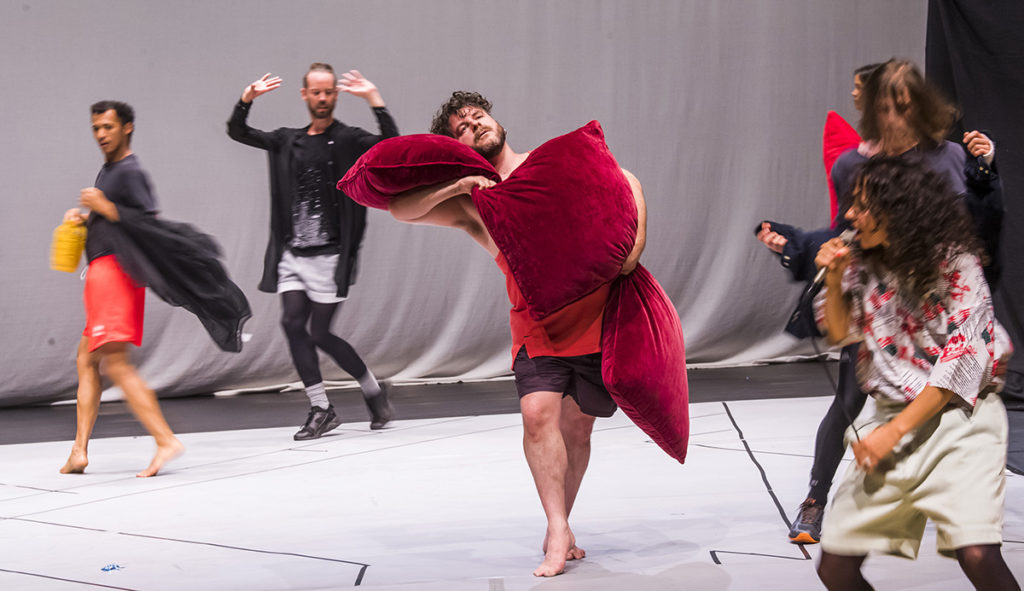
In general, I have always been sceptical of those abstract works of visual art where one needs to read artist’s gloss on the concept, in order to grasp what’s going on. In this case, however, I’m going to come straight out and say that dramaturg, Katinka Deecke’s programme notes regarding the concept will guide you to a deeper appreciation of this production. So, let’s go Deecke’s way…
Harrell’s take on Williams’s original is to look to the margins and the absences, that is to say, to look to the servants, the black employees, whose role in the play is peripheral (to put it mildly), ironically so, given that the wealth of Big Daddy Pollitt’s family was built on the backs of their enslaved ancestors.
Indeed, given that Big Daddy is ‘the Delta’s biggest cotton-planter’, it is likely that the Pollitt family’s wealth is maintained through the sweat of poorer black relatives of those currently in service up at the big house. Maggie herself – in the original, the restless wife of Big Daddy’s number one son – is a liminal character; a woman born into poverty, but living in wealth. As such, she is the perfect MC for Harrell’s re-imagining. When the big dogs are away, Maggie the Cat and her poor mice will play.
Downstage is a white strip walkway, slightly lower than the mainstage. Stage left and right of this walkway there is a microphone on a stand and from here Big Mama (Harrell himself) and Maggie the Cat (Perle Palombe, doubling in baggy shorts as Big Daddy) will gyrate, vocalise and generally conduct proceedings. Harrell sways and dips like he’s on the Isle of Wight, moving to the sounds of Jimi Hendrix, adding smooth counterpoint to Palombe’s impressively dextrous vocalisations.
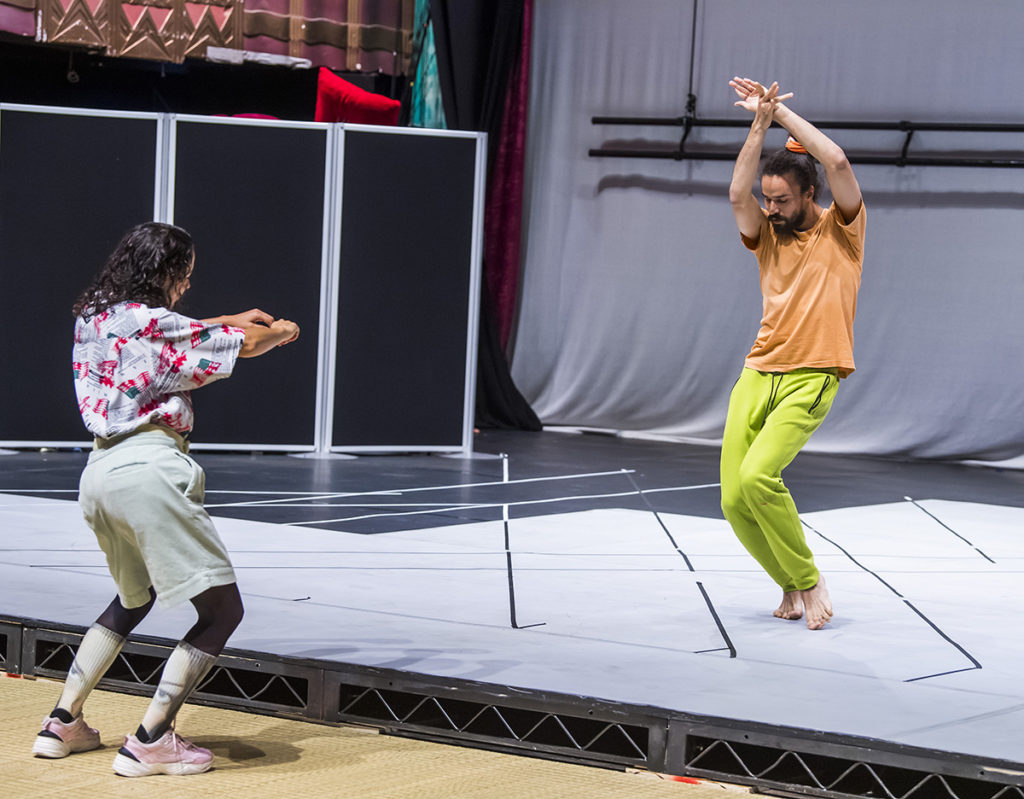
Settle back (or lean forward) for 50 minutes of a DIY fashion show, mercilessly lit and served up like a 19 course banquet at the fastest of fast food restaurants. On the “runway”, the servants (signalled by loosely draped aprons) have claimed the night. Nine dancers – mixed ethnicities, diverse body shapes, blended genders – parade virtually non-stop. Using cushions, towels, bed-throws in a truly amazing variety of folds, twists and stacks (every hat in the house off to the ceaseless imaginings of Harrell qua costume designer) prance, shake, shimmy and (of course) vogue their way into the audience’s heart.
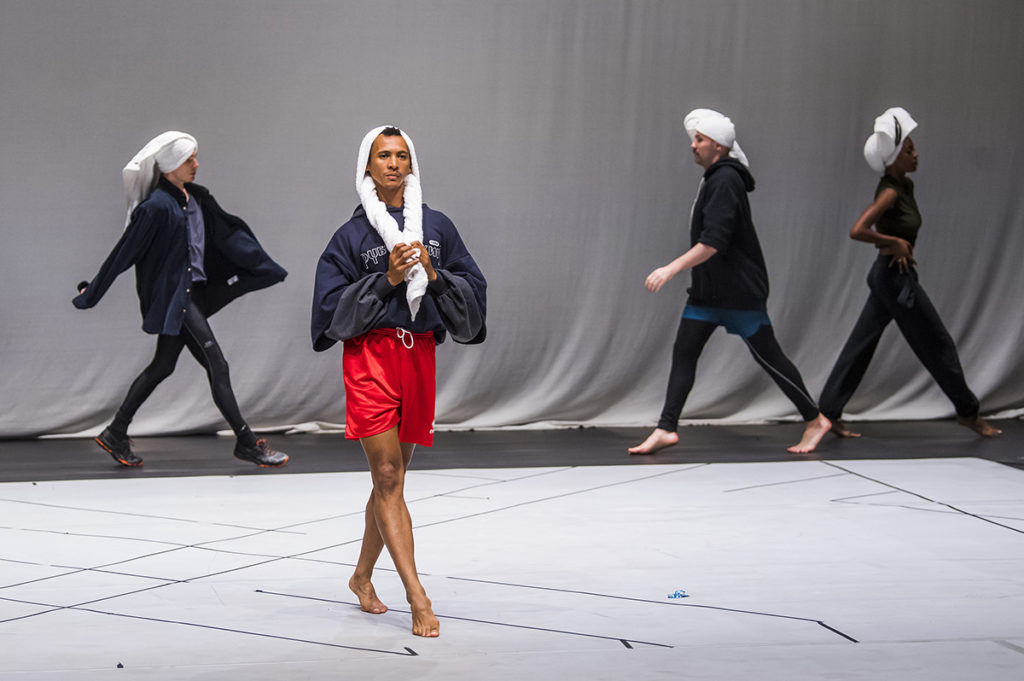
All nine dancers deserve their ovation, but the volcanic panache of Christopher Matthews (putting me in mind of a young Mark Morris) just about edges the sexy sublime of Nasheeka Nedsreal for Performer of the Night.
The indefatiguable Palombe occasionally joins the action: my favourite section combining the pointedly ridiculous (dancers having large, motion-impeding cushions stacked and taped to their bodies) with the poignant and pertinent (these same dancers become chairs, supports, chaises-longues, to be leaned against, sat on, or sprawled across: human beings as furniture for the wealthy, we might surmise).
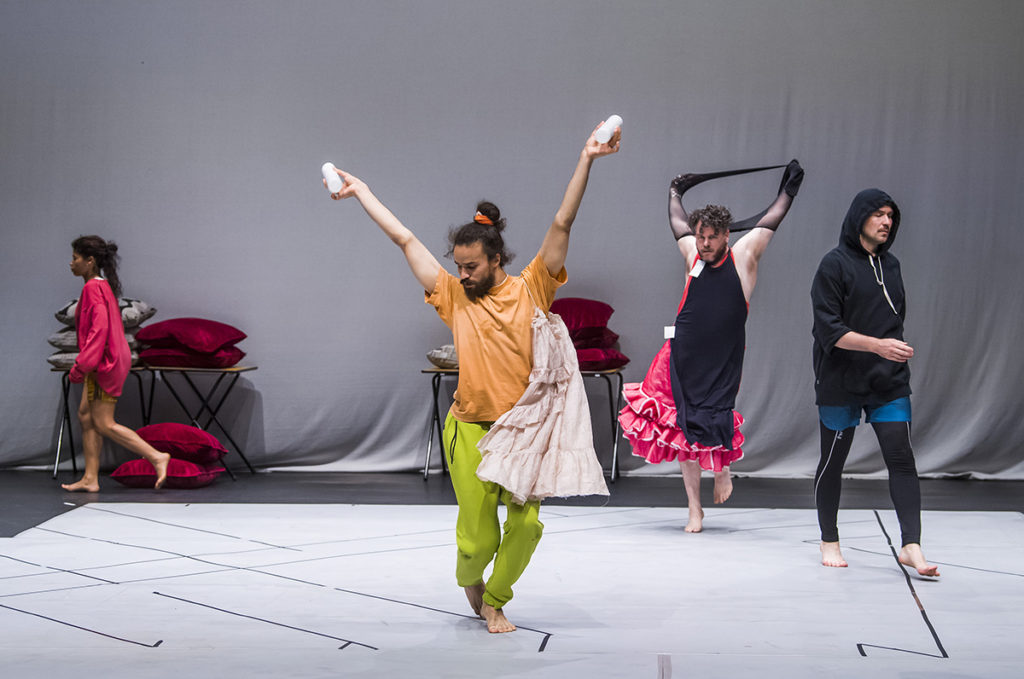
While Stéfane Perraud’s unforgiving, glaring white light is clearly a design choice (here we are, no longer in the shadows) some nuance might have helped the audience catch on once the dancers start to take their individual bows (and each richly deserves that moment of acknowledgement).
That said, Harrell is visibly moved by the warmth of the ensemble curtain call.
Maggie the Cat is only a whisker and a cat-lick away from being an absolute triumph. Buy your tickets. Read the programme notes. Enjoy!
★ ★ ★ ★ ★Maggie The Cat is at The Dancehouse from 11-14 July 2019 as part of MIF19.
Read our interview with choreographer Mark Morris.

